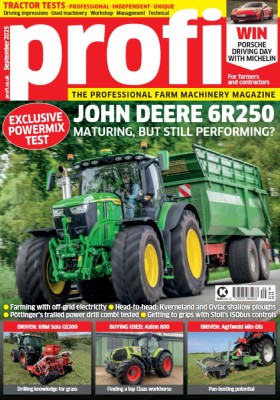The Krone museum at company headquarters in Spelle, Germany, is home to many of the company’s early machines, including one of the Big M prototypes.
Modern Big Ms are fitted with a Fritzmeier cab, but the structure on the early ones, including the 1996-made machine in the museum, was supplied by John Deere.
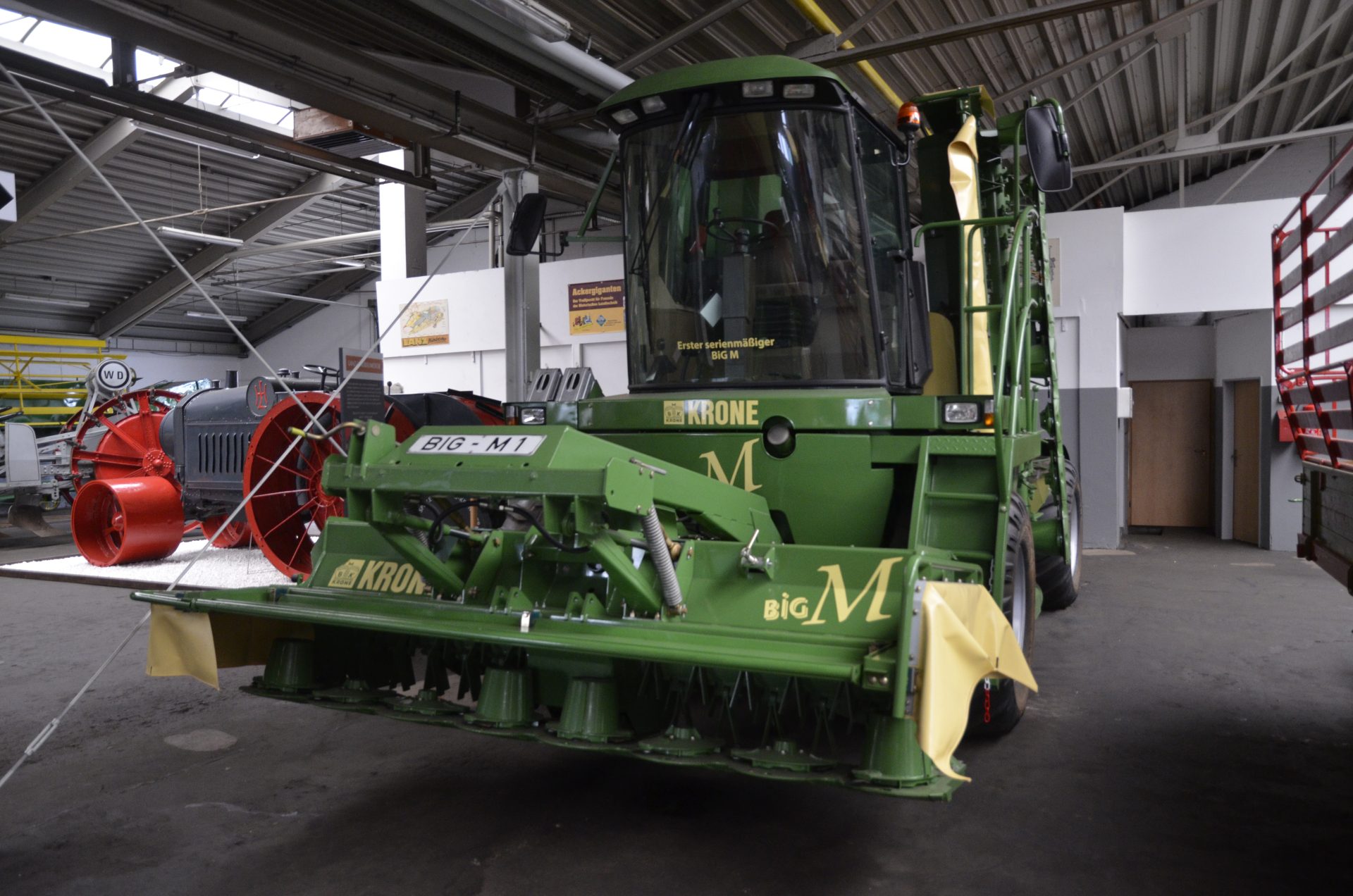
So too was the 300hp engine, while the hydrostatic tranny was jointly developed by Rexworth and Poclain. The three 3.2m mowers were of course made by Krone.
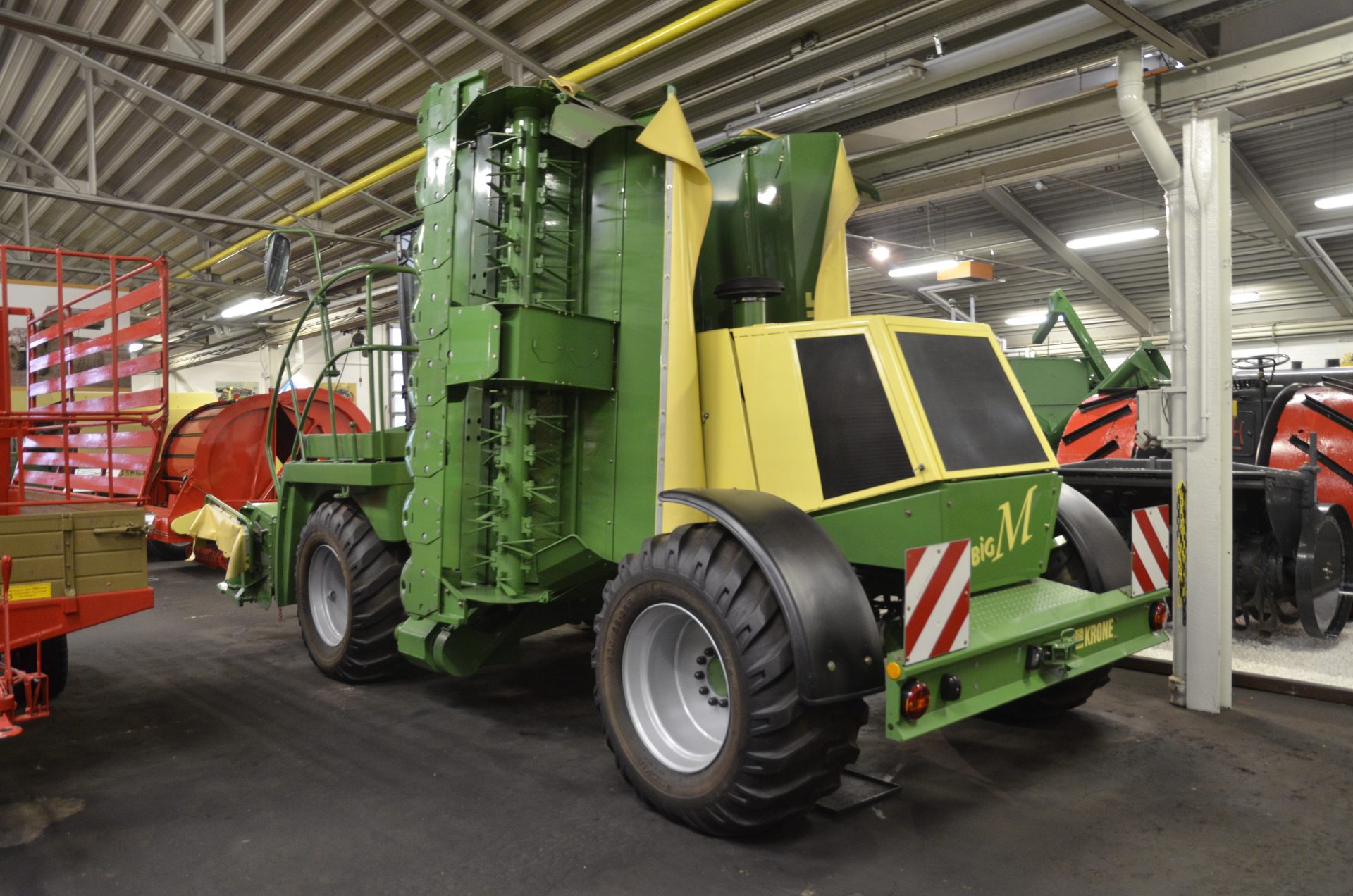
Knocking down 9.1m of grass at a time, the prototype was revealed to journalists on May 20, 1996. The machine in the museum, one of three prototypes, is the one from the 1997 Agritechnica.
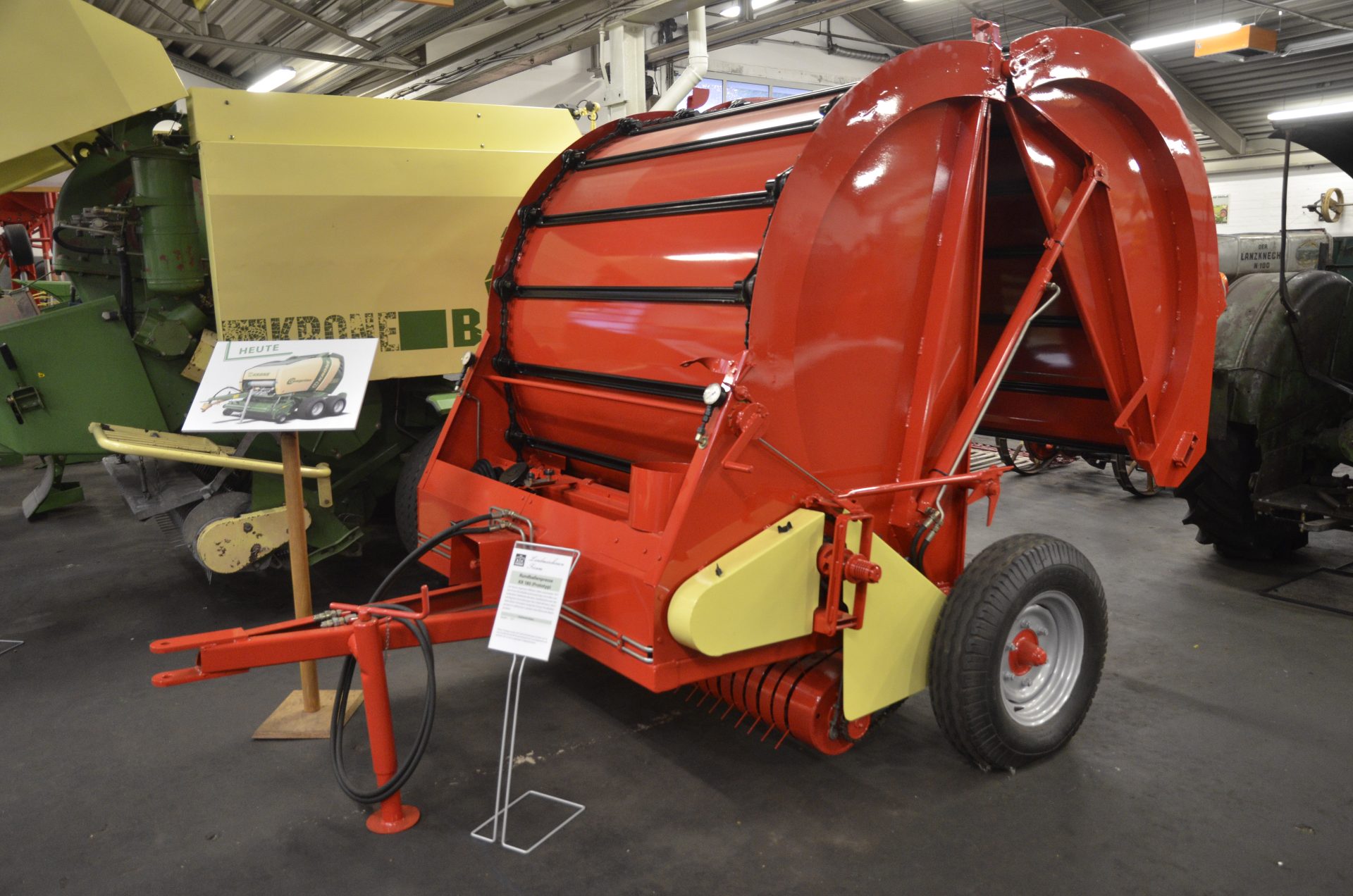
The museum is also home to the first Krone forage wagons and the prototype KR180 round baler from 1977. Next to it is a Big-Pack 80-80, which is believed to have been the first tandem axle large square baler on the market in 1993.

Krone’s focus is squarely on grassland kit today, but it is not that long ago that it made reversible ploughs of up to seven furrows. The museum houses two five-furrow models.
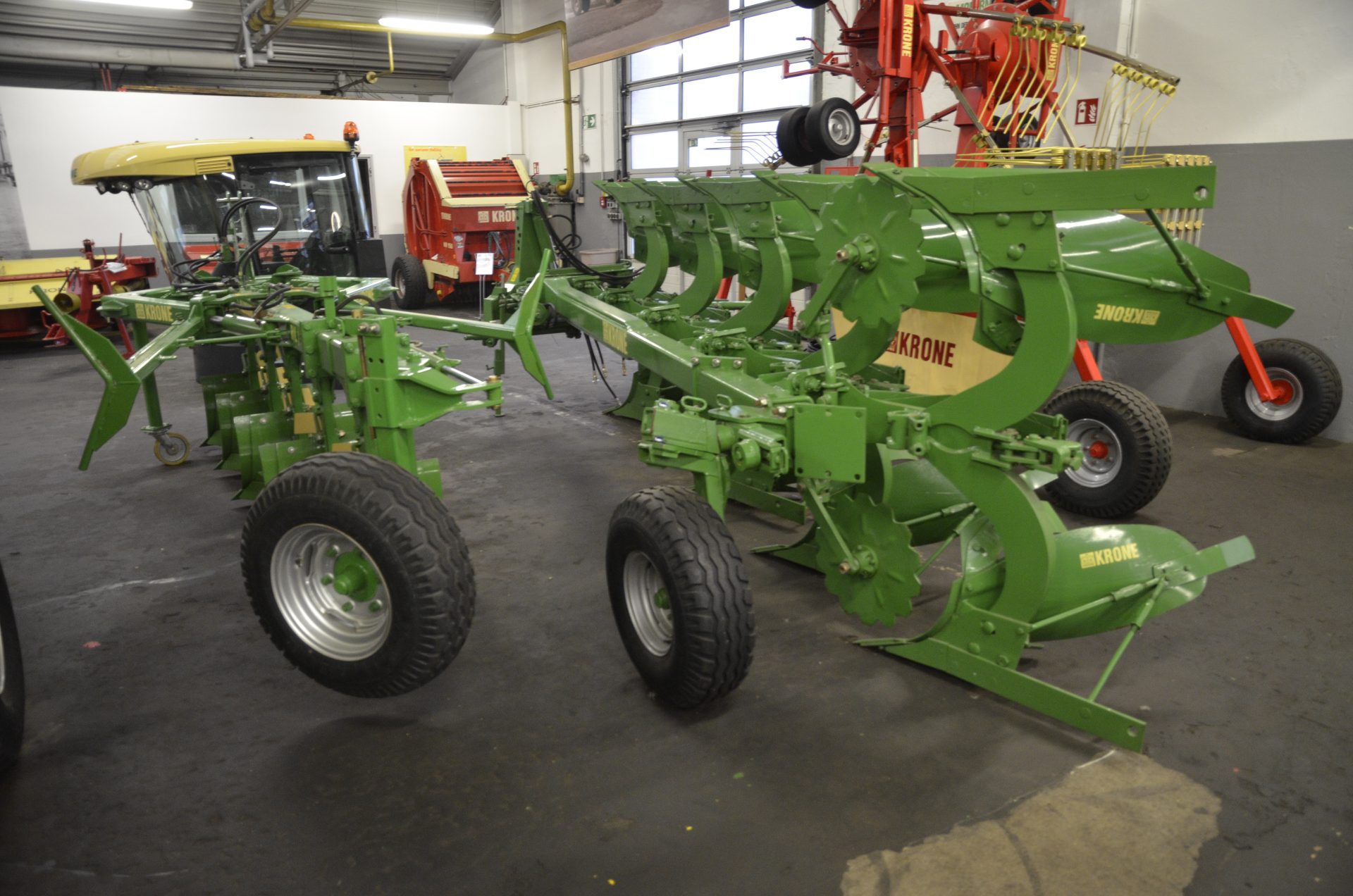
Other highlights include one of the first K56-6.60/20 Duo rakes and TM4/2.70 (2.70m) trailed disc mowers to leave the production line. The roller conditioner offered on the TM (there was also a 3.3m model) in 1973 was a big hit in the UK and Ireland.
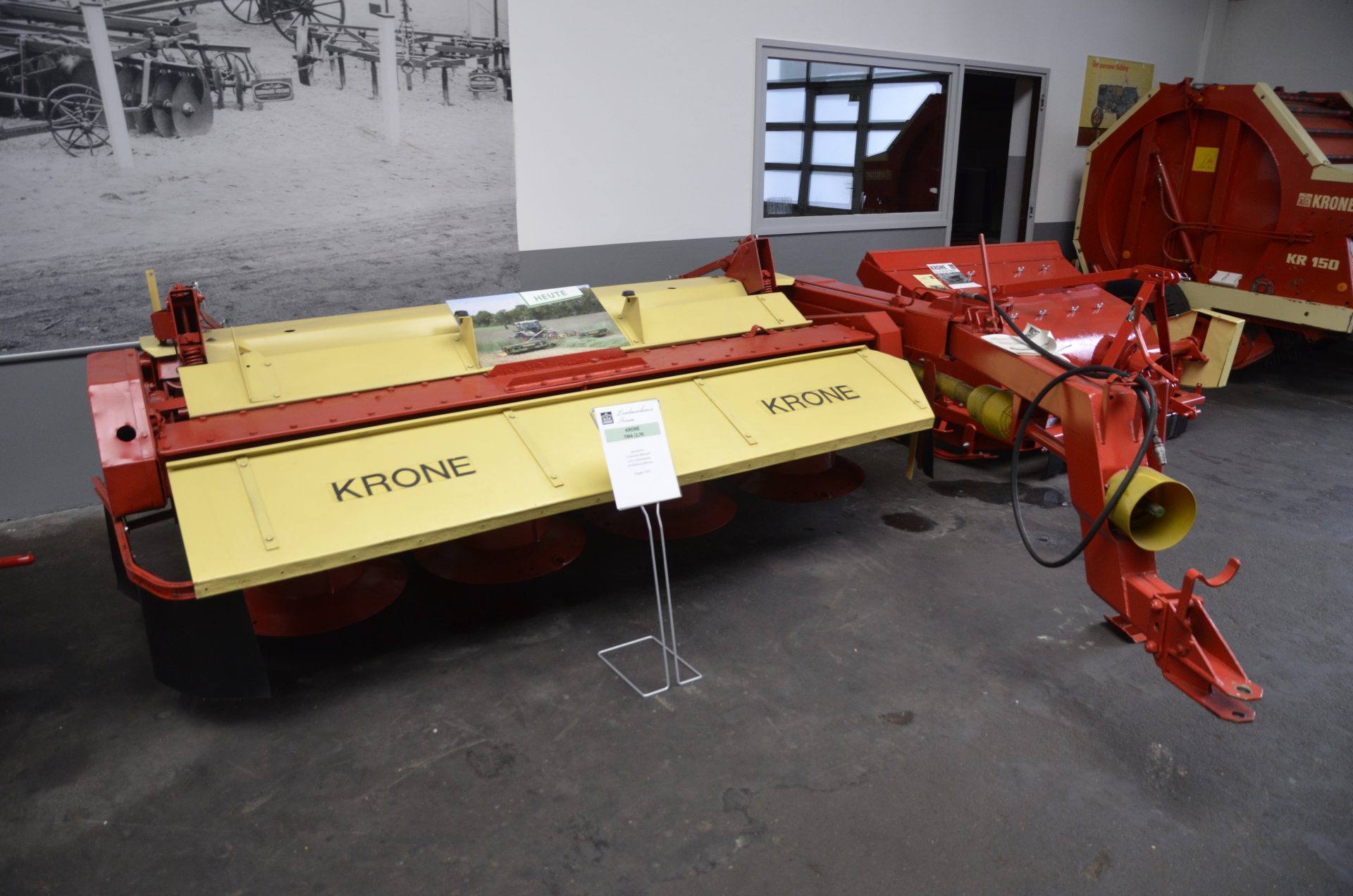
Manure spreaders were a huge success for Krone in the 1960s, and the 1963-made combi model in the museum was unique in that it could also be used as a feeding wagon.
It is not just Krone machines on display in the museum. Other exhibits include a 1962-made Claas Columbus combine, which had a 27hp VW engine and 1.8m cutting platform. Some 60,000 units were made from 1958 to 1970.
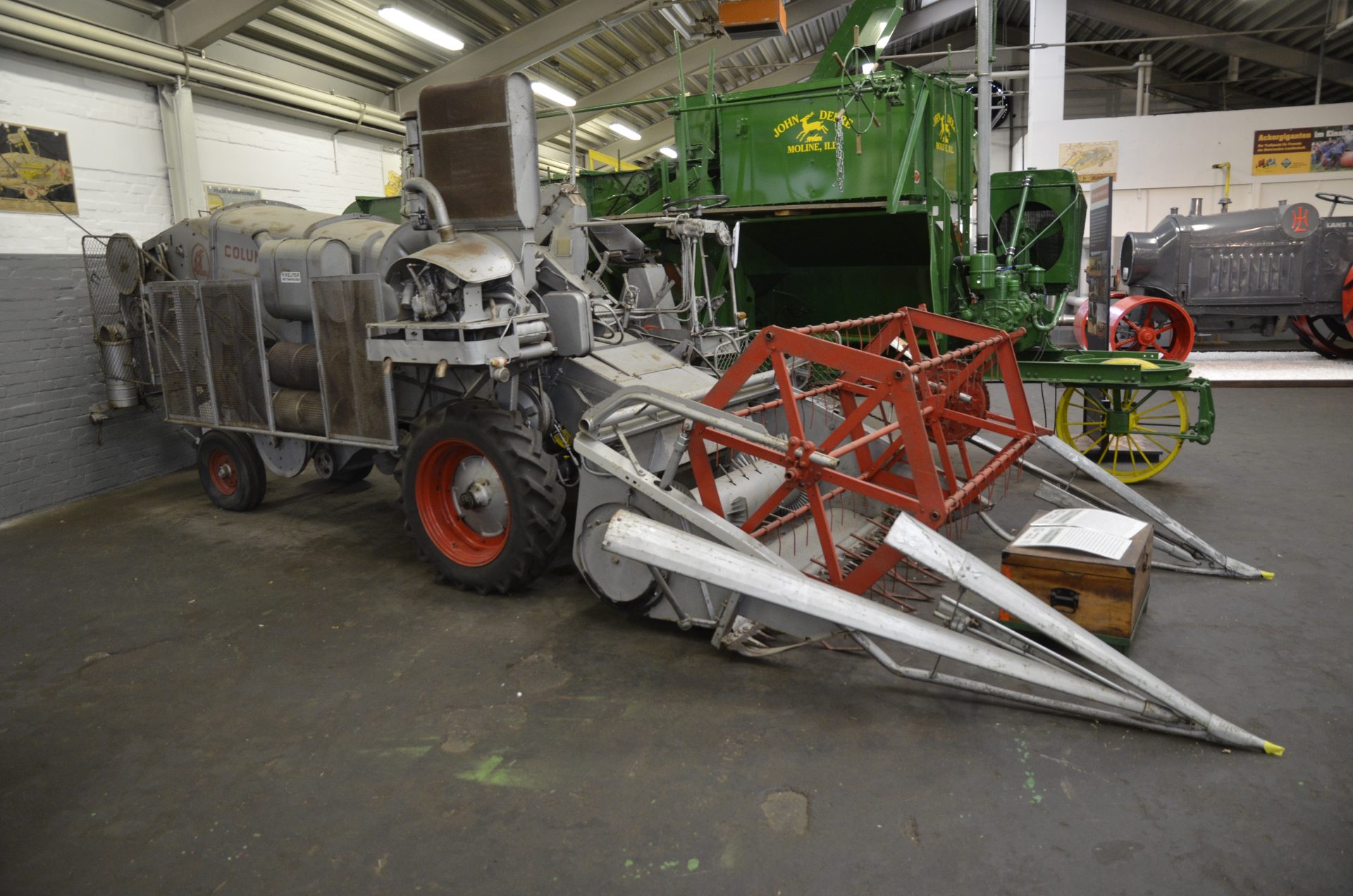
The museum also houses what is believed to be the only John Deere 36 combine in Europe. Another machine on loan from the Germany University, this particular model first worked in Algeria in 1940.
Shipped to France in 1962, it was trucked to the John Deere works at Zweibrucken in Germany in 1971, and at the end of the 1970s found its way to a local museum. It was restored by Krone volunteers from 2012-2014.
Other highlights include what is generally referred to as the ‘Mother of all Lanz Bulldogs’, and a 1917-made Lanz Landbaumotor. Powered by a four-cylinder 80hp petrol engine, which runs at just 800rpm, the 15.5l engine, and the rest of the 3.4t tractor was re-built at Spelle.
With a top speed of 6.0km/hr, it is believed that of the roughly 500 units made, the Krone museum is believed to house the only working example.
One of the most photographed exhibits is the 1919-made 80hp (17-litre) Hanomag and plough combination, and a 6.2t combi that belongs to a German university.
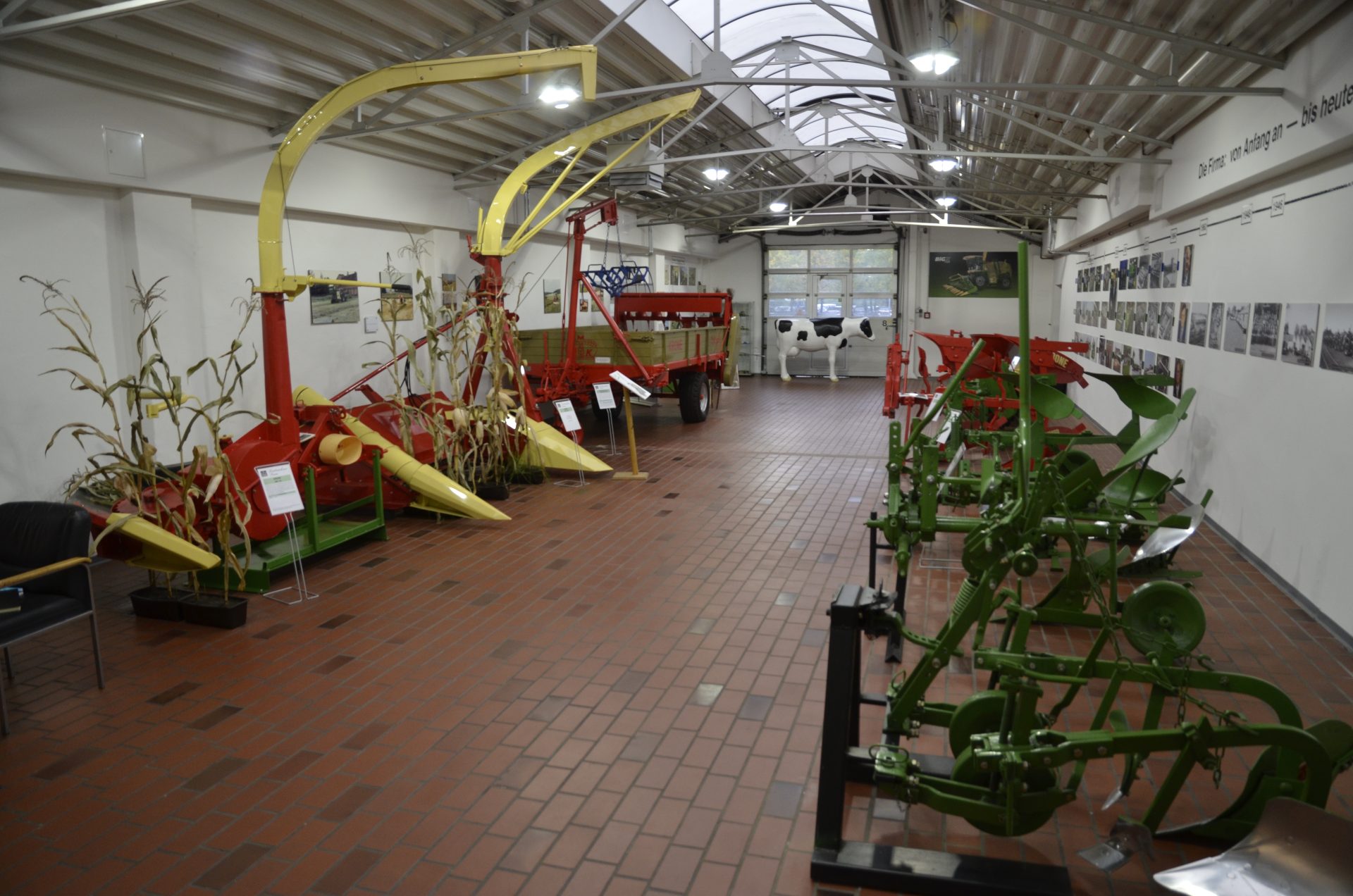
One room of the building is devoted to some of the early Krone power harrows, mounted forage harvesters and muck spreaders, and another is devoted to photographs and medals the company has won over the years.
As well as a superb collection of classic Krone machines, the museum also contains some stunning tractors on loan from a German University and there is also a small collection of vintage tractors.
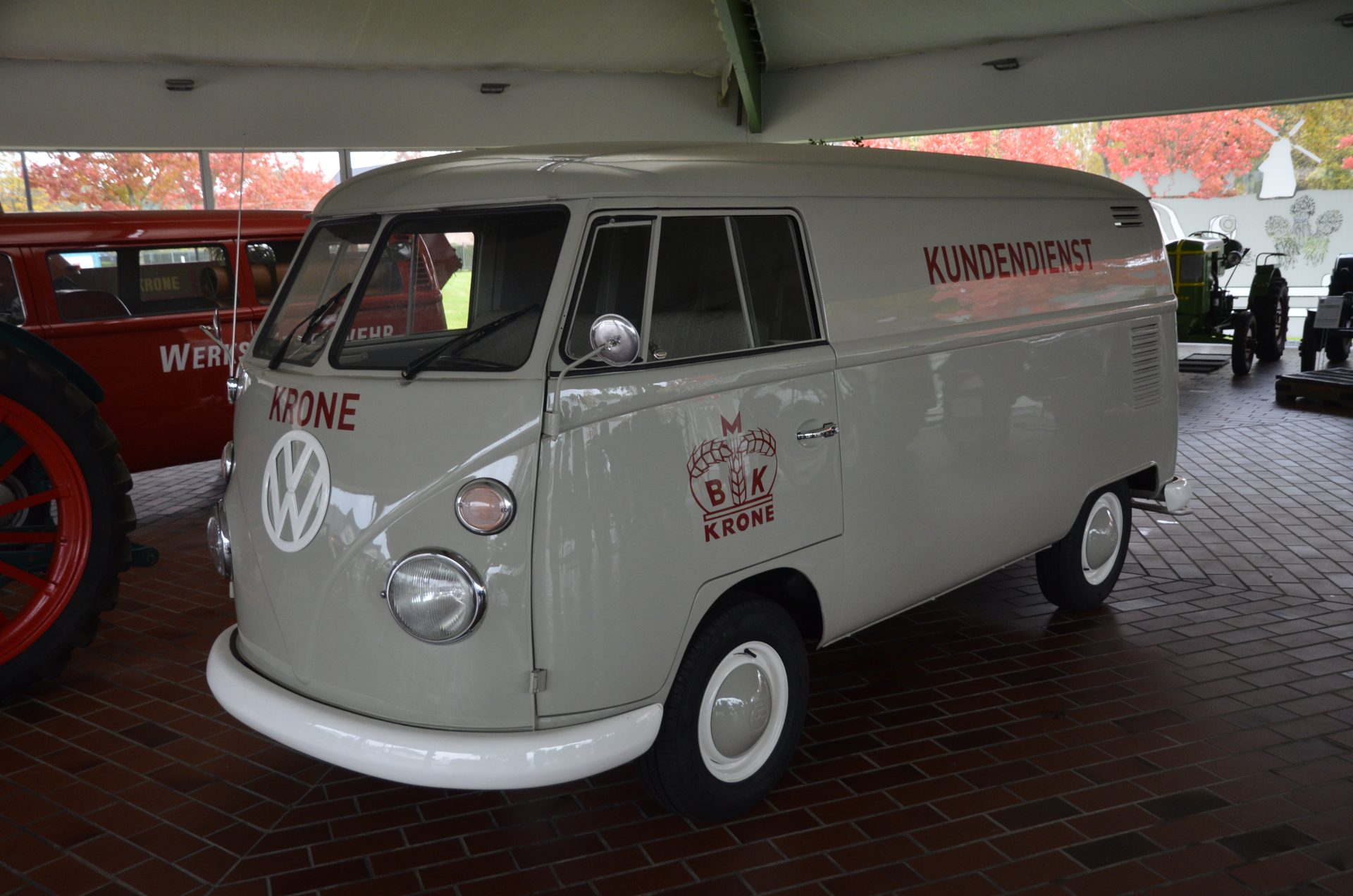
More vintage tractors are housed across the road from the museum, which also contains a restored T-model of the VW van, which was one of the first Krone service vehicles in the late 1950s/early 1960s.
Opened in March 2016, the location in the former offices and workshop is where it all started, and the office Dr Bernard Krone’s father worked until he passed away in 1970 has been kept in its original state.
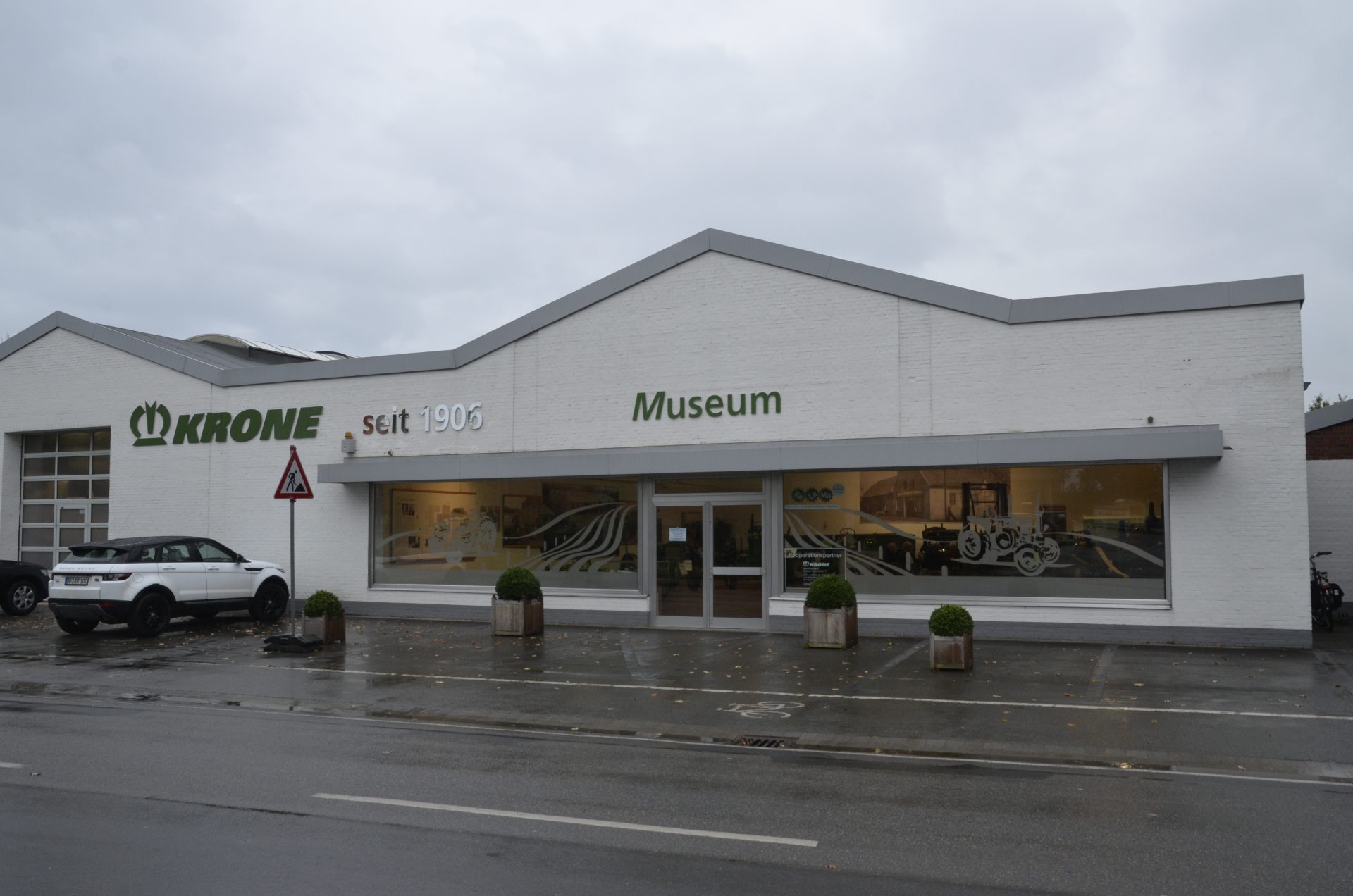
So too has one part of the workshop, which today is used by technical students from a local school to restore vintage and classic machines. The building also contains a mock-up of the original blacksmith’s shop opened in Spelle by Bernhard Krone in 1906. Located directly opposite the Krone hotel, last year the museum (free entrance) was visited by 7,000-8,000 people.
Walter Krone, who had an office in the building up until 2001, not only takes care of the day to day running of the museum, but is also available for guided tours. The coronavirus forced the closure of the museum for a while earlier this year, but the good news is that it is now open again.
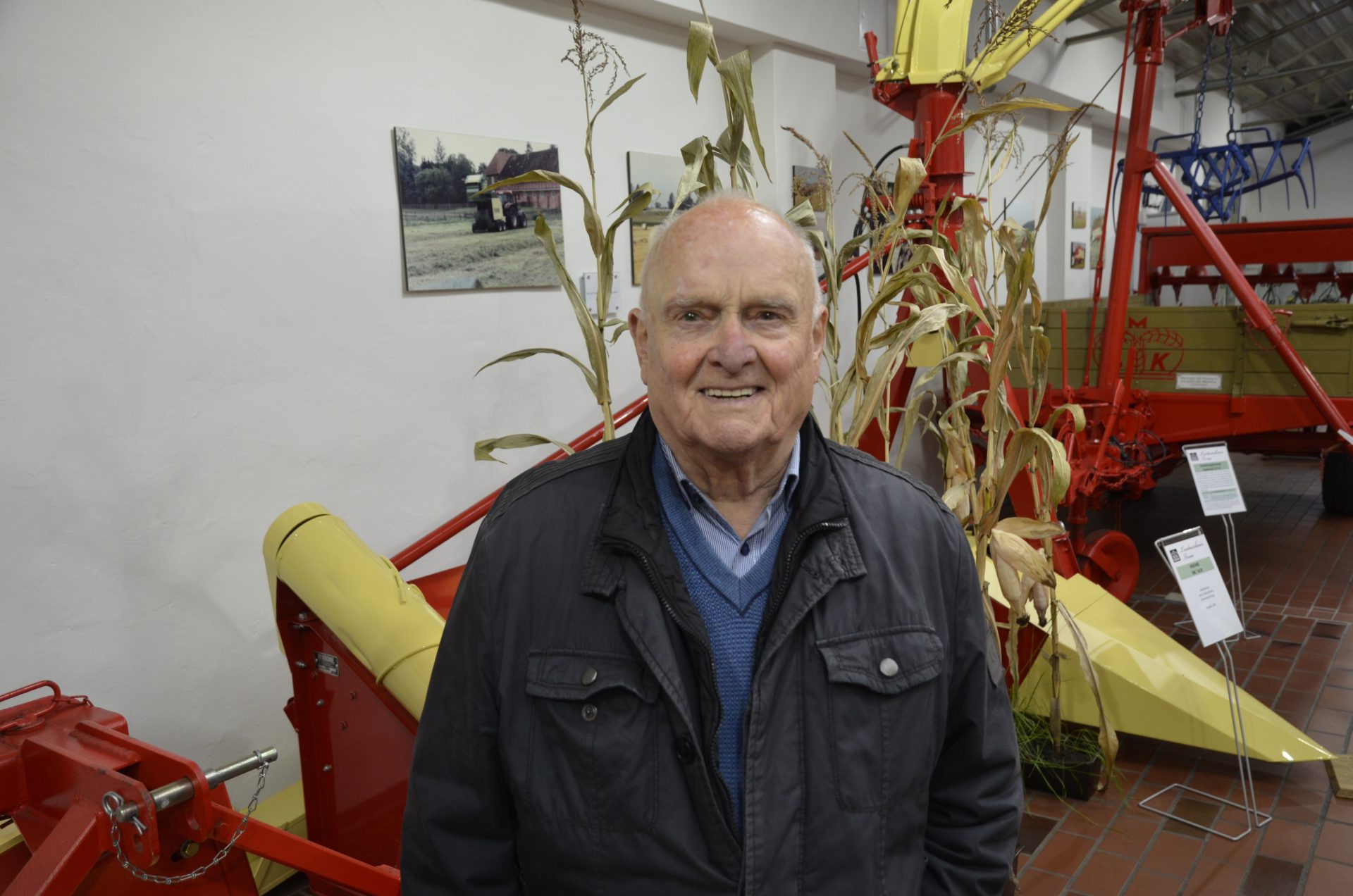
We are grateful for the guided tour of the museum ny Martin Grimm, who worked for Krone for 30+ years before retiring in 2000.
Finally, while the museum is home to a variety of Krone machines that made it to the production stage, the Big X prototype from 2000 is not one of them.
There is no place, or space for that matter, for Krone prototypes, such as the Tillage-Trac tractor, 20-row forage maize header and self-propelled baler and rake, but the museum is well worth a visit if you find yourself in the Spelle area.






